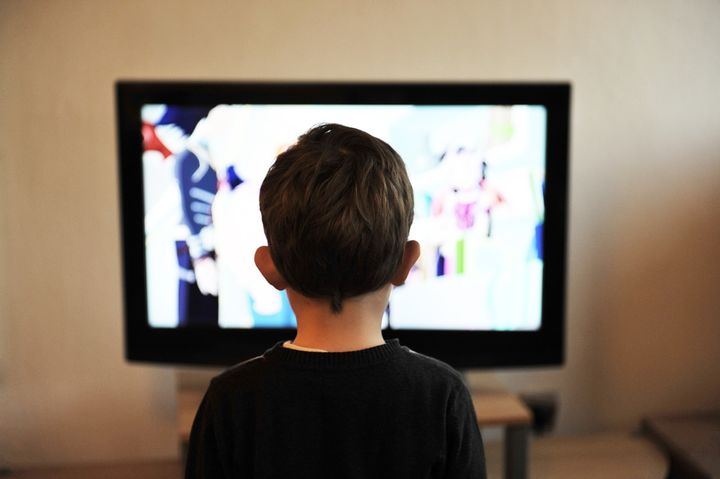
Children born in today’s world live screen-filled lives. Parents often struggle with decisions about when and how technology like smartphones, tablets, and television play a role in a child’s development and education. It doesn’t help that the choices for content are overwhelming. A majority of apps on the market target preschool-aged children and a high percentage of top-selling apps are educational programming targeting young children. The volume of television programs parents can choose for their children is larger than ever before. So as a parent or educator, how do you determine what’s the best level of screen content for a young, growing, and impressionable mind?
Before you throw your hands up in the air and hides all screens from your preschooler, be assured that there is good news in the research about the role of technology. There are positive correlations between the amount of time a child spends with educational media and their academic performance. Preschool children who view educational television programs tend to be more altruistic and have stronger school-readiness. The reality is that quality rules over quantity in the screen debate—it’s not necessarily how long or how often a child uses a screen device, but the type of content and the quality of the interaction that make the biggest difference.
Children experience the strongest academic and social-emotional gains from screen content when their interactions are adult-mediated, familiar, and repetitive. When making decisions about screen content choices for your child, remember these three points.
- Be involved.
- Keep it real.
- Hit repeat.
Let’s take a look at a few guidelines that can help parents and educators create an effective learning environment with screen content.
Get involved.
Parents can play a bigger role than restricting the amount of use or the type of content their kids watch. Adult participation and influence can enhance the benefits of even the most effective educational screen content. How often do you co-use media with your child for educational purposes? Do you discuss content with them during or after use or provide guidance and explanation? Adult mediation is key to successful academic outcomes and retention of the knowledge gained. It also strengthens bonds between parent and child and can help children get excited about dedicated time for learning.
Avoid fast, fantastical shows.
Much of children’s programming today can feel too fast and fantastical. Though bizarre and outlandish storylines can grab a child’s attention, they’re unlikely to facilitate cognitive development. In fact, researchers have confirmed these types of programs can impair executive functioning skills like working memory, attending to tasks, and inhibitory control. Stick with slow and realistic programs for your child, and their brain energy can be used instead to develop functioning skills rather than only making sense of storylines. If you’re not sure how to tell the difference, ask yourself, “How familiar is the world of this story to my child? Does it reflect their experiences?”
Embrace repetition.
Many parents can lose patience when a child asks to rewatch a show or replay an app. But studies show that repetition helps children make sense of how content is formatted and what the story is trying to communicate. Don’t hesitate to hit “replay”— let your child watch through a storyline or scenario a second time. And don’t forget—the closer the scenario is to real life, the greater the benefits on their development. Ask engaging questions about what they learned and what they liked. Just because it’s redundant to you doesn’t mean your child can’t learn from a second or third viewing.
Find the best content.
There are several key criteria that parents and educators can use for sifting through screen content and selecting the best for a child. Content knowledge is important, but programs that support social and emotional learning are also valuable.
Researchers have found that preschool-aged children can identify and distinguish between basic emotions like fear, sadness, and happiness. Children who watch shows such as “Sesame Street” are shown to identify emotional situations better than their peers who do not watch the program. If you want to improve your child’s language and literacy development, look for programming that focuses on expressing thoughts and feelings, explores nonverbal communication, and uses symbolic representation. Also, don’t discount literacy or e-book apps, as they can have a positive effect on young children’s vocabulary and letter-sounding skills.
When adults mediate the use of screens with their children, when they choose familiar and realistic programming, and when they are patient enough to allow for repetition, children experience the most academic and social gains from screen content. There are numerous programs, apps, and other tools that make it easy to incorporate these three rules, so it’s hard to go wrong as long as you stay involved and pay attention to content. You’re likely to experience a stronger bond with your child, and they’ll be well on their way to an engaged and healthy relationship with technology. So think about how you can choose quality screen content for your child today, and don’t hesitate to take a seat next to them on the journey.
